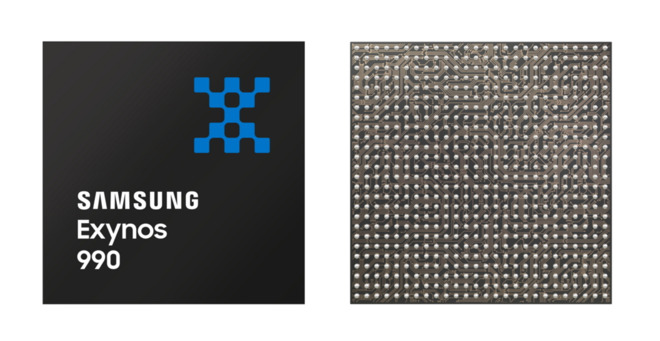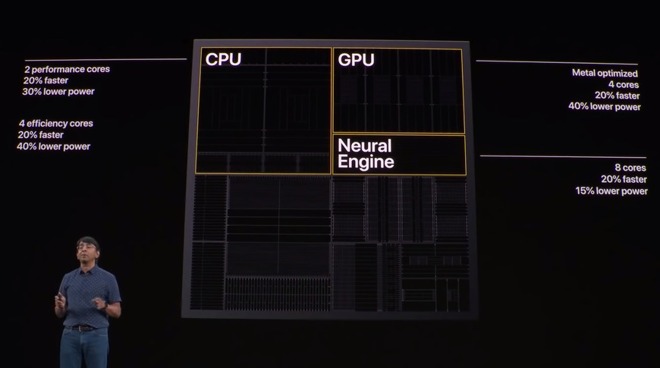Samsung's new Exynos 990 is not quick sufficient to take care of its {custom} M core
[ad_1]

Samsung’s scant point out of M
Since 2010, Samsung’s Exynos cell processors have sought to ship ARM chips that would compete with Qualcomm’s Snapdragon available in the market for Android telephones and tablets and Chromebook netbooks. Samsung as soon as sought to place its Exynos SoCs as rivaling the efficiency and class of Apple’s Ax-series of cell Utility Processors.
Samsung has now delivered 5 generations of its {custom} ARM core because the M1 “Mongoose” first appeared in 2015. However its newest M5 core used within the new Exynos 990 is seemingly its final. The {custom} “M” ARM cores the corporate has been designing at its Samsung Austin R&D Heart (SARC) in Texas have merely not been aggressive in both their efficiency or effectivity, the 2 most vital benchmarks of cell CPU functionality.
Earlier this month, Samsung reportedly laid off tons of of SARC chip designers. At its Samsung Tech Day media occasion this week, it did not even hassle to call its newest core, as an alternative merely referring to the brand new Exynos 990 as having two “highly effective {custom} cores” along with the off-the-shelf A76 and A55 cores it licenses from ARM.
Pay no consideration to the CPU backstage
Samsung promoted its new chip as delivering a 20% enhance in efficiency over its earlier era, however as Android Police famous, “seeing as how the Exynos 9820 SoC acquired trounced by the Snapdragon 855 earlier this yr, we marvel if a 20% enchancment might be sufficient for Samsung to catch as much as Qualcomm’s efficiency ranges.”
The relative efficiency of Samsung’s {custom} “M” cores to the Kyro cores utilized in Qualcomm’s newest Snapdragon 855 Plus is straightforward to see as a result of Samsung ships just about equivalent variations of its Galaxy S flagships with each chips. It makes use of its personal Exynos chip internationally—and domestically in Korea—whereas being required to make use of Snapdragon chips in its premium fashions bought within the U.S., Japan, and China.
Samsung’s M-based Exynos CPUs do not examine favorably with Qualcomm’s chips, however look notably weak subsequent to Apple’s A13 Bionic, which is thrashing Qualcomm’s newest CPU tech by an insane 77 p.c margin in superior CPU core efficiency. Apple famous an analogous 20% soar in CPU and GPU efficiency whereas attaining even higher enhancements in energy effectivity on its A13 Bionic.

Apple’s A13 Bionic CPU, GPU, and Neural Engine are all extra highly effective and energy environment friendly
Samsung targeted its consideration on different options of its SoC, together with a refreshed ARM Mali GPU, a brand new NPU for AI duties similar to facial recognition, and an improved ISP with help for 5 cameras with as much as 108 megapixel sensors. The corporate additionally promoted its new built-in 5G modem. All collectively, these particulars recommend the looks of fancy new merchandise, maybe subsequent spring.
There are, nevertheless, some issues.
First, Samsung’s premium cellphone gross sales have collapsed. Additionally, the Chromebooks, premium Android tablets, and different third celebration consumers that Samsungs as soon as bought its Exynos chips to have additionally dried up and blown away, an issue Exynos shares with Qualcomm’s high-end Snapdragons. On high of that, even Samsung will solely be capable of ship its new Exynos chip in telephones exterior of the U.S., China, and Japan, limiting its potential affect to Korea and different worldwide markets the place a Qualcomm modem is not required.
This provides as much as an more and more dire future outlook for Samsung’s Exynos line of chips. With high-end gross sales already in bother, it more and more makes much less sense for the corporate to be dumping cash into its {custom} “M” core structure that is not paying off however is more and more falling behind.
An obvious finish of M
Samsung first delivered its {custom} “Mongoose” M1 core design in 2015, which it utilized in some fashions of the Galaxy S7 and Notice 7. It was adopted by M2, M3, M4 and the newest M5 generations throughout the final 5 years. However these Exynos chips had been solely usable in a small slice of Samsung’s premium-priced Galaxy S and Notice fashions bought exterior of the most important markets for smartphones —the place Qualcomm’s CDMA patents made it impractical to promote an Exynos with Samsung’s built-in modem.
Samsung additionally knew that CPU velocity wasn’t a serious driver of its smartphone gross sales. For consumers who wished to see quick benchmarks, Samsung may merely cheat to supply spectacular numbers, which was less expensive than creating completely new chip architectures.
The corporate has additionally most popular to indicate off its different technical achievements, together with its lead in OLED panels, Qi charging, and elsewhere. Including a licensed NPC that guarantees to speed up synthetic intelligence is straightforward to do, as demonstrated by Huawei. No have to {custom} design a CPU core. And focusing consideration on 5G additionally good points media consideration, even when 5G networks will not be accessible and will not materially profit most customers for years.
Samsung’s System LSI chip fab was additionally working to remain within the lead in chip fab course of, which may assist even a sub-optimal core design run quick just by scaling it down and ramping up its clock velocity. Samsung additionally confronted undifferentiated commodity competitors from Chinese language cellphone makers who had been utilizing fundamental ARM designs of their very own. Gross sales of middle-tier Androids have been destroying demand for high-end Galaxy S choices.
So for Samsung, spending huge quantities of cash on {custom} core design it may solely actually use on a fraction of its latest, most costly telephones, whereas it was additionally coping with post-peak premium Galaxy S gross sales in a maturing market, was type of like altering the tires on a automobile that was at present on fireplace. 5 years of restricted M-core improvement have solely resulted in a third-place runner-up that it may promote in choose markets anyhow.
Customized ARM core design is not a cake stroll
In distinction to Samsung’s odd avoidance of even mentioning “M5,” Qualcomm name-drops its personal “Kyro” {custom} core as typically as doable, and Apple likes to provide you with quick sounding advertising names for every main new era of its {custom} CPU core designs: this yr it was Lightning and Thunder, the A12 Bionic launched Tempest and Vortex, A11 Bionic used Monsoon and Mistral; A10 Fusion blew out Hurricane and Zephyr and A9 spun up Tornado.
However Apple’s storming deluge of ARM-twisting custom-core improvement hasn’t simply been intelligent advertising. Business observers have been in awe of the quantity of labor the corporate has dedicated to constructing its {custom} Ax ARM chips throughout the final decade, noting that Apple’s quickest chips are actually bumping up into the uncooked efficiency territory of Intel’s x86 choices, whereas crushing x86 in energy effectivity.
The truth that Apple is catching as much as Intel ought to spotlight how extremely complicated and costly it’s to play within the large leagues of state-of-the-art CPU design. Intel has dominated the roost in PC CPU efficiency because the 1990s, even within the face of the very decided consortium of IBM, Motorola and Apple to defeat it with Energy PC within the 1990s, and regardless of intense aggressive efforts extra just lately by AMD.
There are a number of universities actively engaged on launching satellites, however none are creating their very own state-of-the-art CPU processor designs. Superior {custom} silicon processor structure design is past even house analysis.
Why has Samsung fallen behind in ARM chip design, regardless of years of world-leading hit gross sales quantity of smartphones? The following article will take a more in-depth have a look at how Apple was capable of sneak previous bigger extra entrenched silicon specialists at Intel, Qualcomm, and Samsung whereas the media doubted its progress and wager that rivals would simply catch up.
[ad_2]
Supply hyperlink